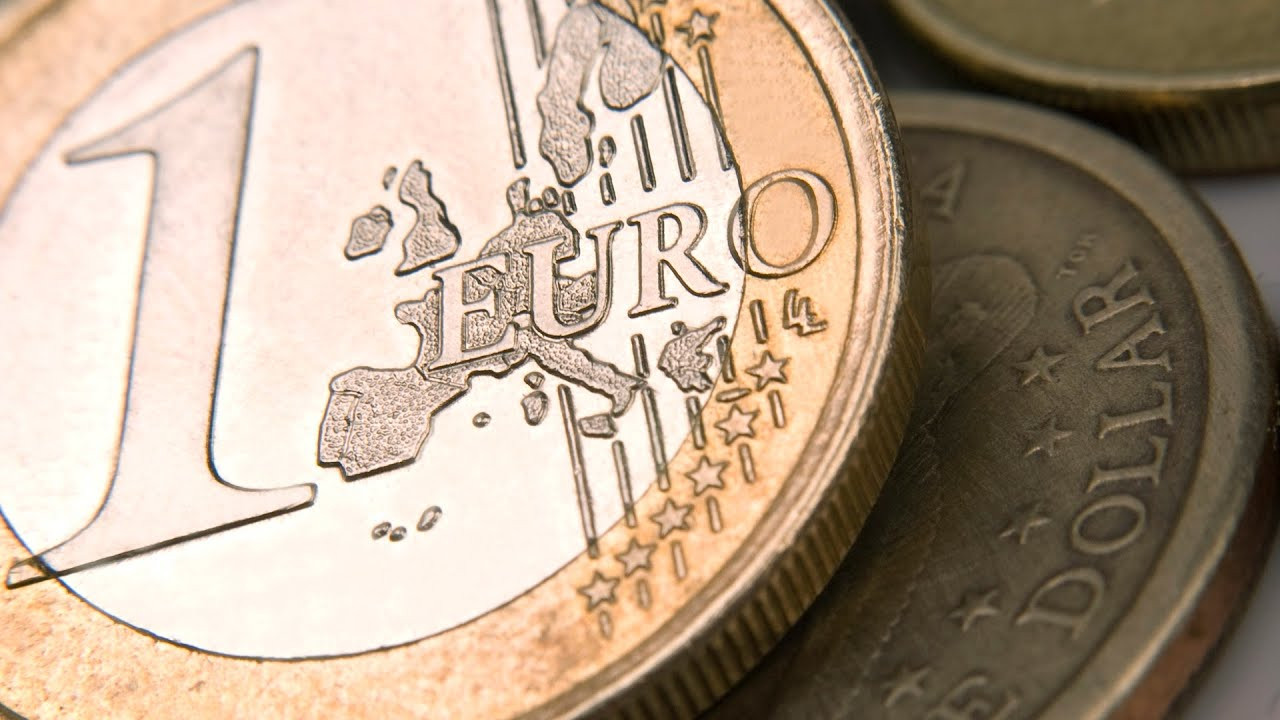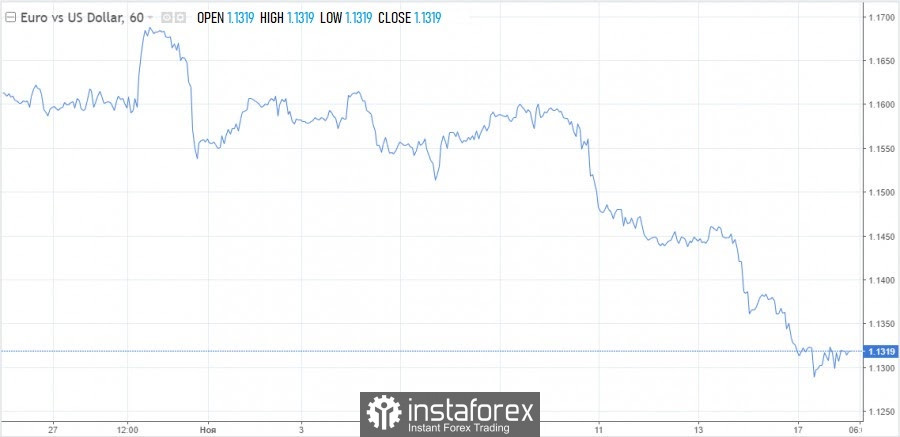
The dynamics of the euro stands out most among the major world currencies and causes the greatest concern among traders. On Wednesday, the EUR/USD pair touched 1.1263, the lowest level in almost 16 months. However, not for long, market players quickly bought it off, consolidating just above the 1.1300 mark.
Now everything is very shaky, the European Central Bank's verbal interventions have done their job. The divergence in the policies of European and US central banks will not allow the euro to act as a dominant in the EUR/USD pair. Here, either the Federal Reserve's policy needs to resist expectations of a rate hike more strongly next year, or the ECB should show the greatest concern about accelerating inflation. Since neither of these things happens, the EUR/USD pair has one way - down.
From a technical point of view, the euro now looks oversold, but it is unlikely to achieve a convincing rebound without changing the fundamental forecast. The question is, how much can the euro collapse?
Judging by the latest ECB statistics on changes in assets on its balance sheet, the monetary authorities continue to aggressively print money. Although ECB President Christine Lagarde has repeatedly talked about reducing the pace of asset purchases in the eurozone. The growth of the money supply will certainly put additional pressure on the euro.
At the moment, according to analysts, the weakness of the euro is cyclical. The outlook for eurozone growth is weak due to a jump in production costs related to gas and electricity. The ECB's policy has nothing to do with this, while the central bank has been sitting in a dovish pose for a long time. This theme has so far been reflected in pro-cyclical peripheral European currencies like the SEK, which have fallen more than the euro. If this situation smoothly shifts from autumn to winter (most likely it will), then the euro's weakness will begin to take on a more serious character, especially when additional factors manifest.
There is a power struggle going on in Germany. At the same time, the most fierce is the behind–the-scenes struggle for the post of finance minister - de facto, the second most important, after the chancellor. Christian Lindner of the LDP has repeatedly explicitly stated his desire to head the Ministry of Finance. This is at least discouraging, given that he has never worked in either business or finance.
Thus, the euro can smoothly move into an existential phase. What will the new existential crisis in the markets be like for the eurozone and will it be different from the past? This time it will be different. The ECB is firmly "sitting" on the EU sovereign market and is likely to break all the rules in order to keep spreads at about the same level. The only speculative means remains the euro.
The largest analysts overwhelmingly expect further depreciation of the European currency. The EUR/USD pair managed to bounce back from the 1.1270 area, but, according to Scotiabank analysts, the market will break through it.
"Now the level of 1.1270 represents support, and oversold indicators restrain further decline. EUR/USD can attract bulls on falls to this level. Nevertheless, a strong downward momentum may soon cause the pair to close below this mark, and then there are no significant supports on the chart up to the round level," analysts comment.
If the mark of 1.1270 does not stand, then the bulls of the dollar will first of all take the course for the July 2020 low - 1.1185 and then - at 1.1168.

The short-term outlook for the EUR/USD pair remains negative while trading below the resistance line built from the September high of 1.1610. Long-term ones are also not encouraging - the forecast is bearish.
The next ECB meeting is likely to be decisive for the euro rate for 2022. Updated forecasts, including inflation, will be announced at the meeting. Something suggests that the central bank will keep the purchase even after the end of next year. The rates will remain unchanged until 2023, unlike the Fed. This means that next year the EUR/USD pair can be seen at around 1.1000.
 English
English 
 Русский
Русский Bahasa Indonesia
Bahasa Indonesia Bahasa Malay
Bahasa Malay ไทย
ไทย Español
Español Deutsch
Deutsch Български
Български Français
Français Tiếng Việt
Tiếng Việt 中文
中文 বাংলা
বাংলা हिन्दी
हिन्दी Čeština
Čeština Українська
Українська Română
Română

